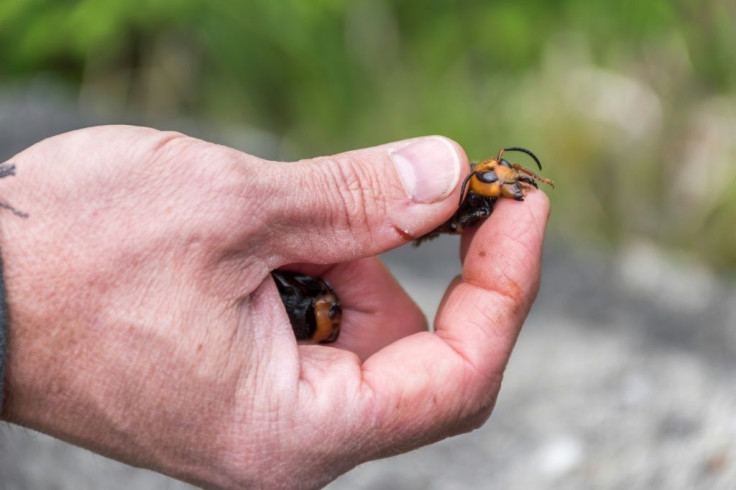Experts Predict Where 'Murder Hornets' May Potentially Spread
KEY POINTS
- Asian giant hornets were spotted in the U.S. for the first time in late 2019
- Experts predicted where the species could spread if they're left unchecked
- Parts of the U.S. and other countries were found to be susceptible to an invasion
A team of scientists has predicted where the Asian giant hornet could possibly spread, highlighting the importance of the efforts to keep the species in check.
There were reports earlier this year about Asian giant hornets (Vespa mandarinia), nicknamed "murder hornets", being spotted in the country for the first time in Washington, causing panic among people.
Now, a team of researchers predicted where the species could actually spread in the U.S. and globally given the right conditions, and if left unchecked.
For the study, published in the Proceedings of the National Academy of Sciences, the team examined records of the species' native habitat in Japan, Taiwan and South Korea and used models to predict where the species could spread across six continents.
"We show V. mandarinia are most likely to establish in areas with warm to cool annual mean temperature, high precipitation, and high human activity," the researchers wrote in their study.

As a Washington State University (WSU) news release explains, the species will most likely thrive in places that have "warm summers, mild winters and high rainfall." Since extreme heat is deadly for the species, they will most likely thrive in places where the maximum temperature is 102 degrees Fahrenheit (38.9 degrees Celsius).
"We found many suitable climates in the U.S. and around the globe," study lead author Gengping Zhu of WSU's Department of entomology said in the news release.
Places with these conditions include the U.S. East and West coasts, northwestern and southeastern South America, central Africa, eastern Australia, most parts of New Zealand and Europe. Since all these locations also have high human activity, they are the ones who could most likely be affected by a potential invasion.
A majority of the interior parts of the U.S. are said to be "inhospitable" to the hornets because of the extreme conditions that can be experienced in those areas.
If efforts are not taken to check the spread of Asian giant hornets, the researchers say the species could spread to Oregon, southern Washington and British Columbia.
"Calculating that hornets could fly up to 68 miles per year, their worst-case scenario found that the insects could disperse throughout the western regions of Washington and Oregon in 20 years or less," the news release says.
These are only projections of how the species may spread but, such data is important because even if Asian giant hornet attacks on humans are considered rare, the presence of the species can severely impact honey bee colonies in their native habitat. Unlike Japanese honey bees, western honey bees have not developed an effective defense against Asian giant hornets and are therefore susceptible to the giant hornets' attack.

Although there's really no saying where and how fast the species can establish a nest, preventing the spread is imperative in the efforts to preserve and protect honey bee populations.
In Washington, for instance, the state agriculture department and the United States Department of Agriculture continue to work together to set up traps in the areas where Asian giant hornets were previously observed. In August, the agencies began testing radio tags that would be used to track live specimens.
"Preventing the establishment and spread of Asian giant hornet in western North America is critical for protecting bees and beekeepers," study co-author David Crowder, also of the WSU Department of Entomology, said in the news release. "Our study can inform strategies to monitor and eradicate these invaders before they become established."
© Copyright IBTimes 2024. All rights reserved.





















